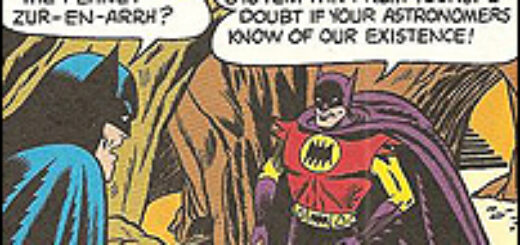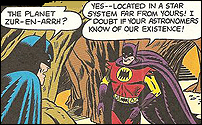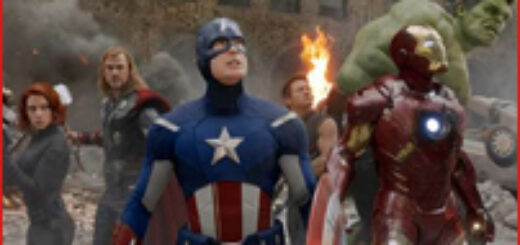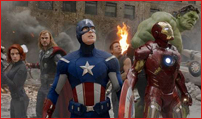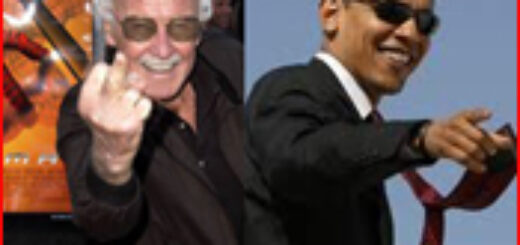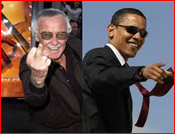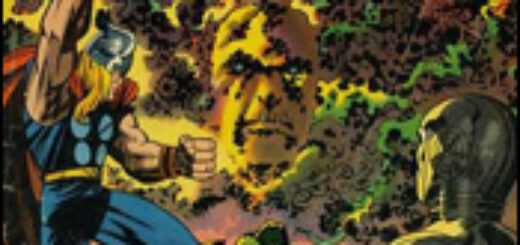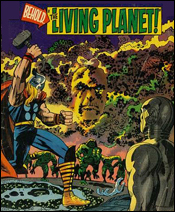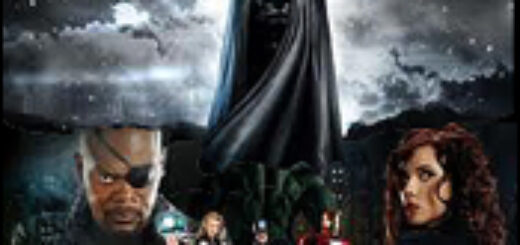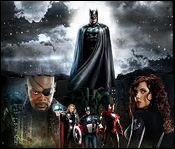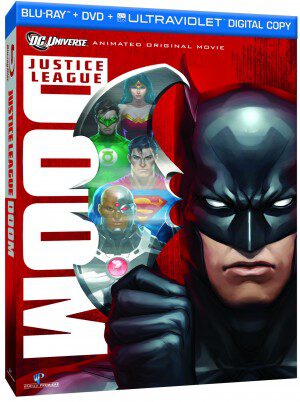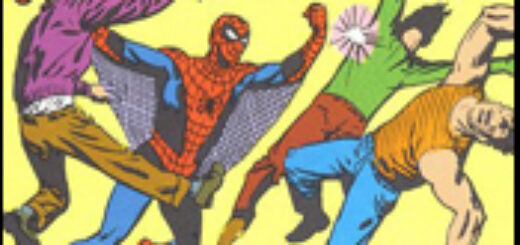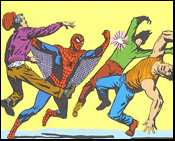Michael Davis: The Avengers … Or The Anatomy Of The Bitch Slap.
 Mickey Mouse just bitch slapped Scooby Doo. Donald Duck just put his foot up Shaggy’s butt. Goofy just cold cocked Velma.
Mickey Mouse just bitch slapped Scooby Doo. Donald Duck just put his foot up Shaggy’s butt. Goofy just cold cocked Velma.
Disney just kicked Warner Bros’ ass.
Marvel just told DC “fuck the New 52!”
This all happened the moment The Avengers movie opened.
The Avengers is the best superhero movie ever made.
E.V.E.R!
Yes, this is just my opinion but consider this: I’ve had my problems with DC Comics but I’m a huge fan of the DC universe. I’ve always considered Superman The Movie the best superhero movie ever. I thought that because Superman works on so many different levels and it still holds up decades later. Superman The Movie is over 30 years old and it still works. It was made without the crazy shit that exists now in special effects and it still works.
In the movie, that mofo caught a helicopter in 1979 without CGI, without Industrial, Light and Magic, and it still works.
You get that? That mofo (Superman to those unhip out there) caught a helicopter without the 2012 computer magic that exists today and I was all in!
What does that mean really? It means a good superhero movie is not just about guys or girls in tights who fly and have lots of fights throughout the film.
Superman The Movie remade the character but kept the original story intact. The story was the story of Superman that everyone knew before they went into the theater to see it, yet it was also new. That’s hard to do.
I’ll say that again. That’s hard to do.
Don’t think so? Did you see The Punisher movie when the Punisher was not even in his costume? Did you see the Captain America movie when Cap walked from the North Pole? Those were horrible movies to be sure but Hollywood gets it right sometimes and still screws some of the comic book mythos for no reason. That’s no reason except some guy in the room with juice gives a “note” that he thinks is a good idea and the other monkeys in the room agree.
For instance, take what I consider a great superhero movie, Batman. That’s the 1989 version – but yes I still love the 1966 version! For some reason known only to whothefuckever came up with it they made the Joker the killer of Bruce Wayne’s parents.
I bet if the same guy worked on Superman he would have said, “I have an idea! Let’s make Superman from Compton instead of Krypton!”
Hollywood seems to think they know better than the people and the industry that created the property and that’s why doing a superhero film that respects the source material is so hard.
Just ask Alan Moore.
I’m lucky enough (or badass enough if you happen to be a pretty girl impressed by this type of bullshit) to work in Hollywood. If some studio wanted to make a movie out of one of my creations I would most likely let them do what they want even if they disagreed with my vision of my creation.
Why?
Because what I do is not art, it’s entertainment.
So as a writer who has three books coming out between late 2012 and mid-2013 (if the Earth is still here) I can say without hesitation: Hollywood, take my work and make it a movie. If you want my input, great! If not, then write me a big check and spell my name right in the credits.
As a writer I have to be smart about the way the business of entertainment works. I have to play the game. That said, I will not roll over like a little bitch if you want do something so stupid like making Static Shock a white kid (that was a suggestion by a studio executive) or you tell me some dumb 1950s shit like black superheroes don’t sell. Yeah, that happened as well.
So I will bend but I won’t break when confronted with real world scenarios when it comes to being a writer.
But as a fan? As a fan I won’t stand for any shit that does not fit my view of what a great superhero movie is and first and foremost is respect the source material!
The Avengers movie not only sticks to the comics, it adds to the brand.
Not easy to do.
Marvel Studios and Disney produced a superhero movie that rabid geek fan boys can take a girl and even if that girl hates all things geek she will love this movie.
Result? Possible tapping of some ass.
I’m watching The Avengers in 3-D. Live action IMAX 3-D. The Avengers!!! I’m watching the Hulk, Thor, Iron Man, Captain America, The Black Widow and Hawkeye and they are the characters I know and love. This is what I want as a fan-this is what all comic book fans wants from their superhero movies.
That’s why, for my money, this is the best superhero movie ever done.
Warner Bros. can’t even get the goddamn Justice League movie made.
That’s why Tony Stark just made Bruce Wayne his bitch.
TUESDAY AFTERNOON: Emily S. Whitten Gets The Scent!
WEDNESDAY MORNING: Mike Gold Gets Nancy, Good!


